Abstract
In making comparisons of the mortality of different occupational groups, it is essential to allow for differences in the age distributions of the groups. The principle of “standardizing” for age is long established. Each of the two conventional methods, direct and indirect, leads to a “Standardized Mortality Ratio” (S.M.R.) which is a weighted average of the ratios of the death rates, by ages, in the occupation, to the corresponding death rates in some standardizing population. In both methods, very great weight is given to the ratio obtained from the oldest age groups. Previous research has shown that there is serious distortion in the recording of occupations, which is greatest among the oldest age groups; the S.M.R.s based on the conventional methods are thus liable to serious error, as well as to “bias”.
A more recent method, inverse, of particular use when the age distribution of the occupation is unknown, gives more equal weights to the ratios of the death rates for the various age groups. The S.M.R. calculated by it, therefore, generally differs markedly from those obtained by the conventional methods.
In a fourth, apparently new method, the weighting of the ratios of death rates is again more uniform than in the conventional methods; it has the further advantage of being based on the age distribution of the standardizing population rather than that of the occupation itself as is the case with the third, inverse, method. This “new” method of obtaining an S.M.R., for comparing the mortality of the occupational group as a whole, is therefore the one which is least open to objection on logical grounds.
However, each of the four methods, and of two others given in the literature, is an attempt to compare one occupation with some standard in terms of a single index, averaging the ratios of the death rates by ages. Such an index can take no account of the variation between these ratios and since this variation is often very great none of the methods can fail to be misleading in many cases. Further, the standard deviation of each index takes no account of this variation and so can be misleading also.
Full text
PDF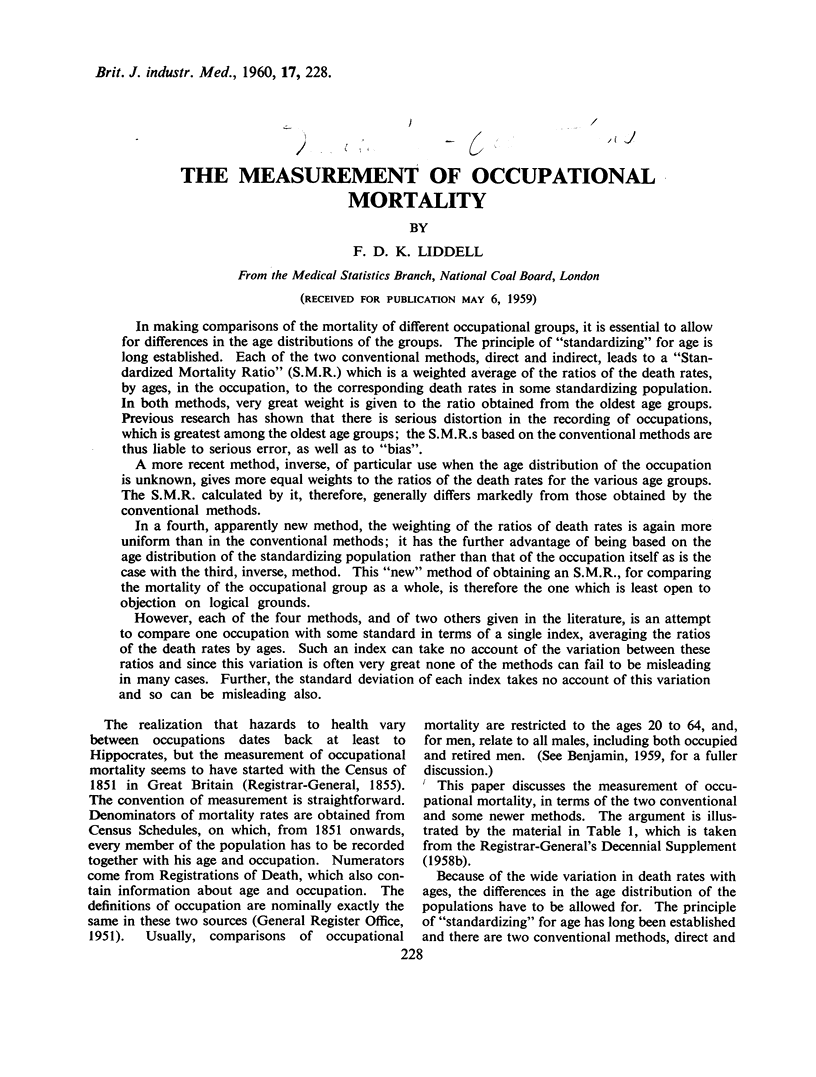
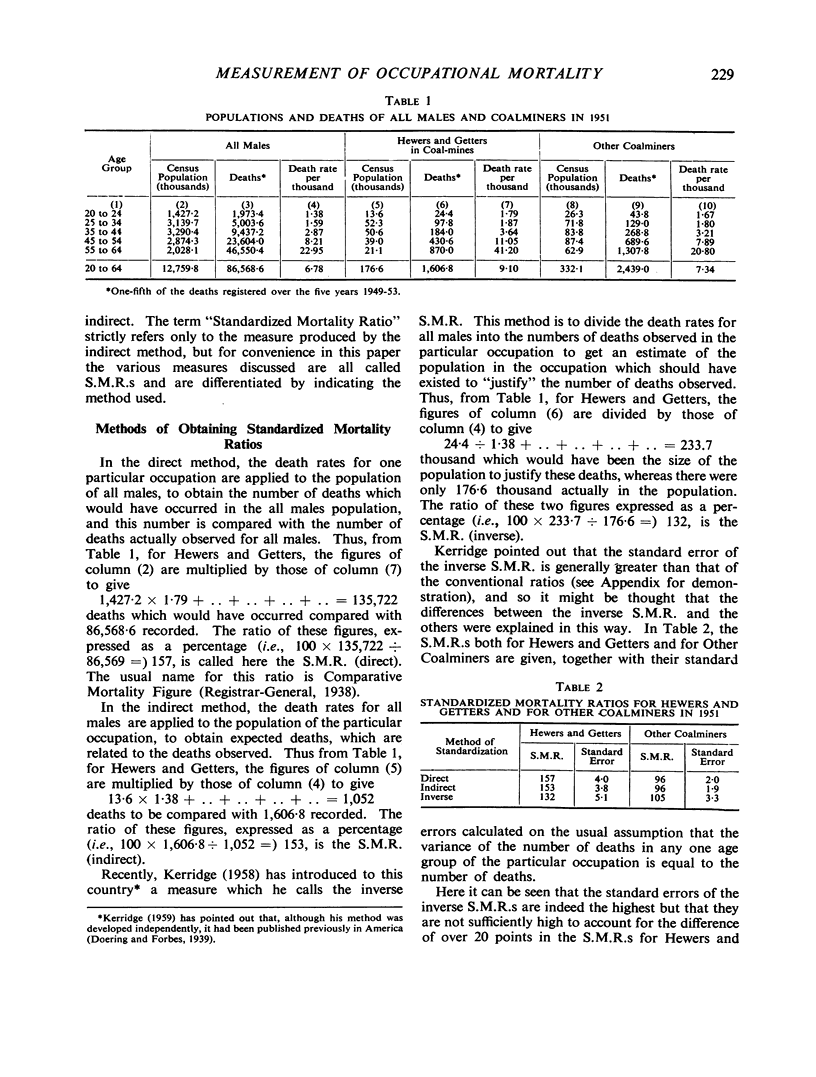
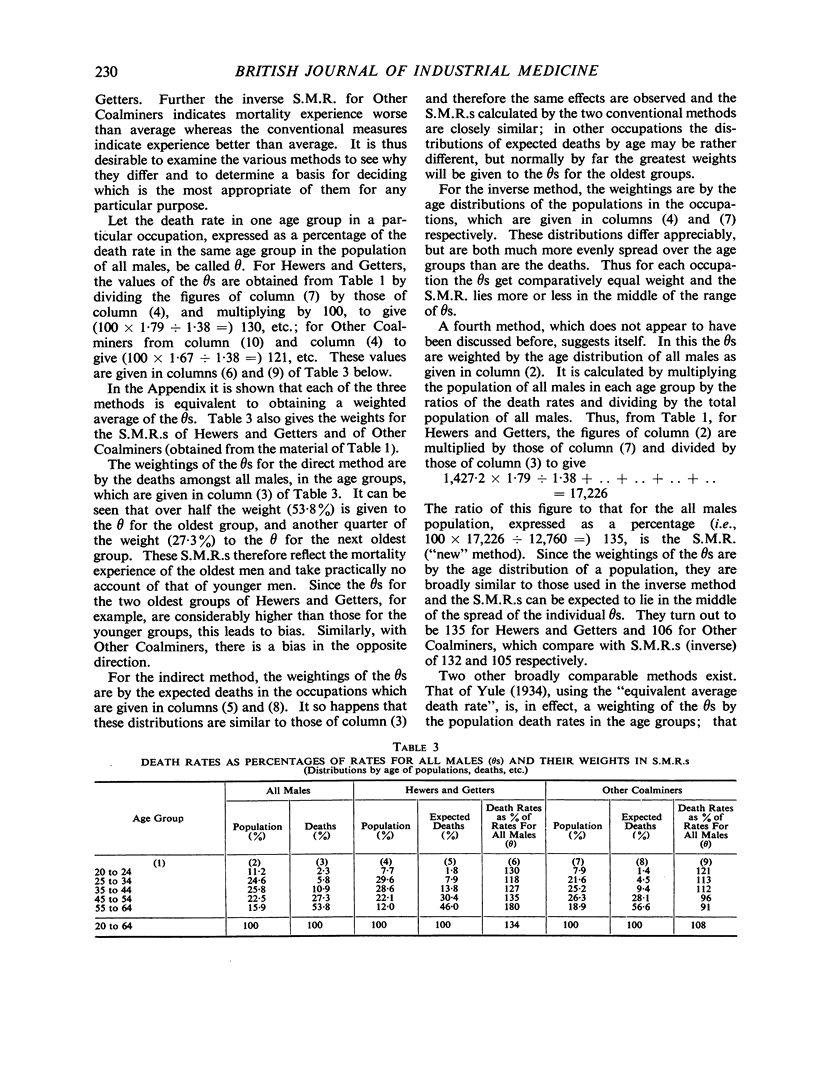

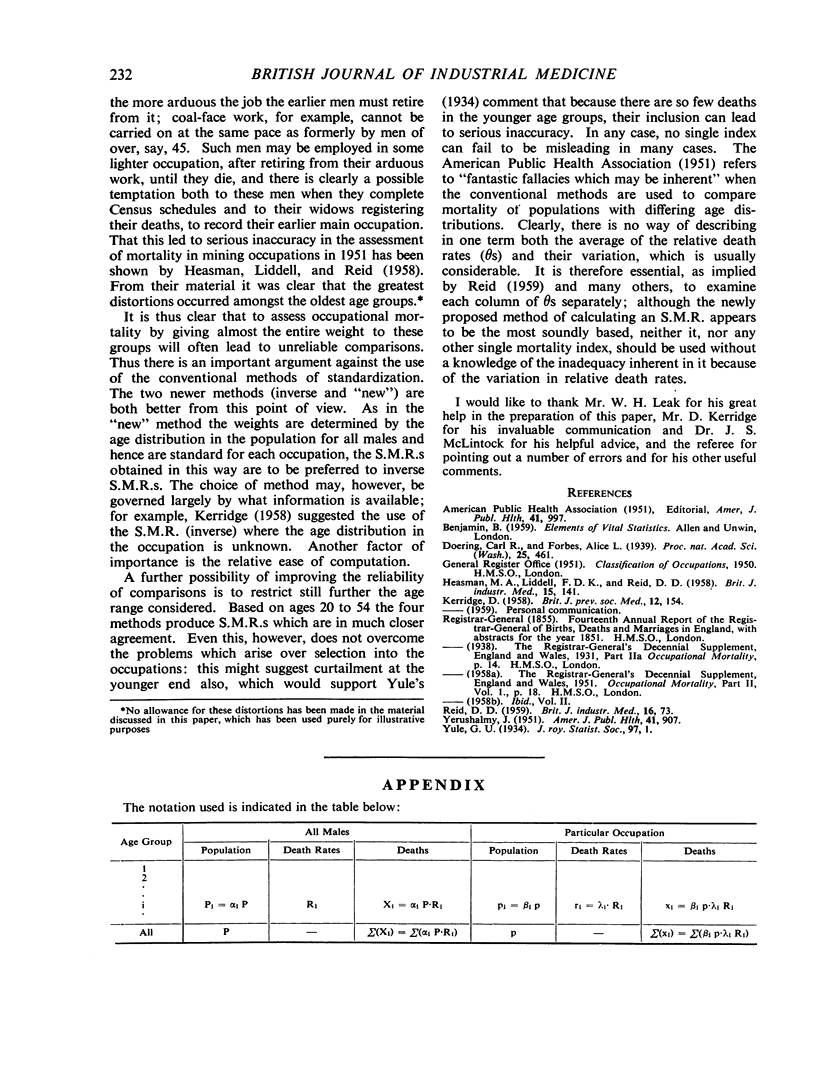
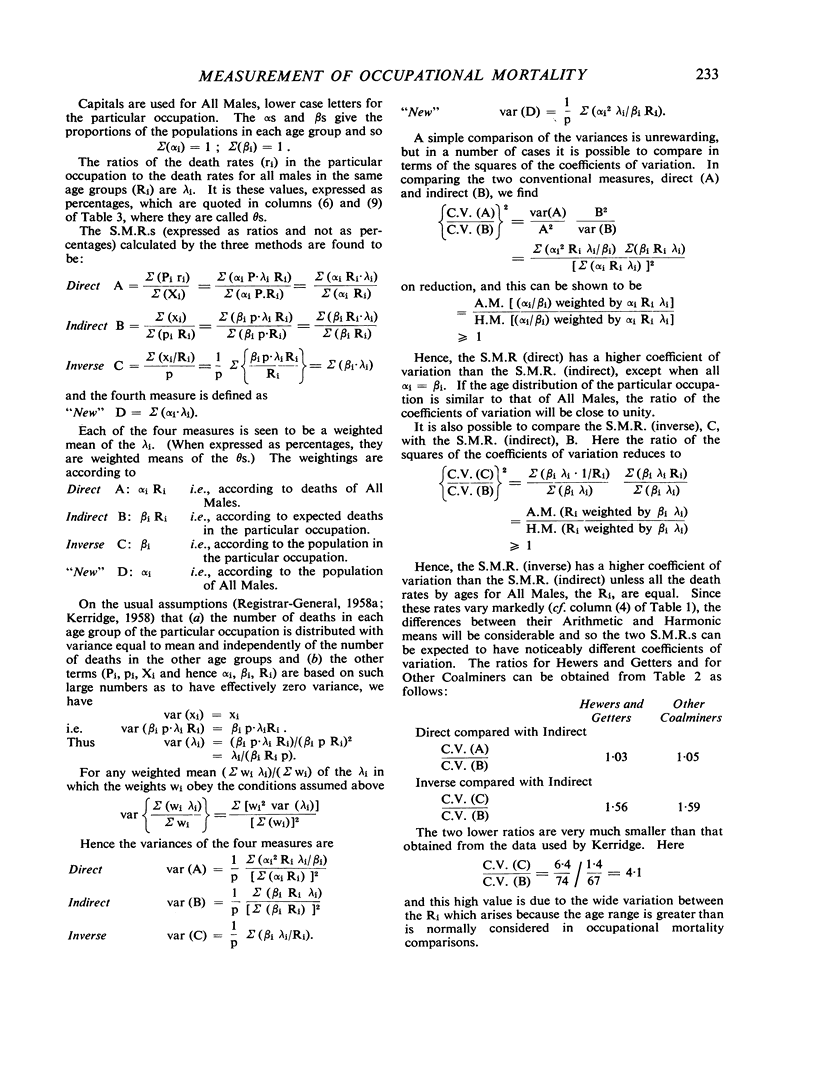
Selected References
These references are in PubMed. This may not be the complete list of references from this article.
- Doering C. R., Forbes A. L. Adjusted Death Rates. Proc Natl Acad Sci U S A. 1939 Sep;25(9):461–467. doi: 10.1073/pnas.25.9.461. [DOI] [PMC free article] [PubMed] [Google Scholar]
- HEASMAN M. A., LIDDELL F. D., REID D. D. The accuracy of occupational vital statistics. Br J Ind Med. 1958 Jul;15(3):141–146. doi: 10.1136/oem.15.3.141. [DOI] [PMC free article] [PubMed] [Google Scholar]
- KERRIDGE D. A new method of standardizing death rates. Br J Prev Soc Med. 1958 Jul;12(3):154–155. doi: 10.1136/jech.12.3.154. [DOI] [PMC free article] [PubMed] [Google Scholar]
- YERUSHALMY J. A mortality index for use in place of the age-adjusted death rate. Am J Public Health Nations Health. 1951 Aug;41(8 Pt 1):907–922. doi: 10.2105/ajph.41.8_pt_1.907. [DOI] [PMC free article] [PubMed] [Google Scholar]


